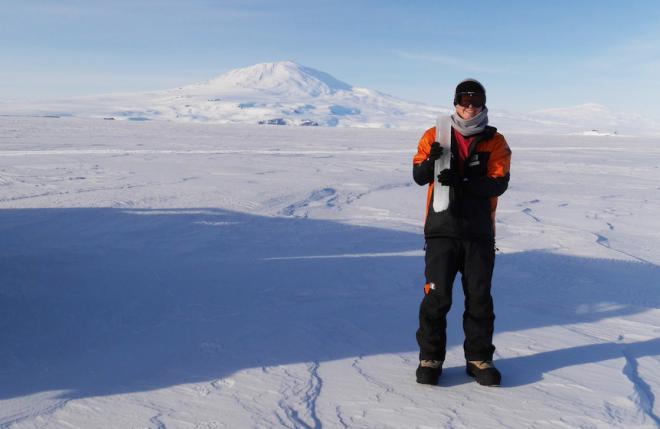Understanding sea ice changes in the Antarctic
Front-line field work, combined with climate modelling using NeSI supercomputers, is helping University of Otago scientists understand how Antarctic sea ice is changing over time and how it differs from sea ice changes in the Arctic.
As a researcher studying ice-ocean interactions, Dr. Inga Smith often collaborates with modellers, observationalists, and remote sensing experts at Otago and other New Zealand universities, as well as Crown Research Institutes (NIWA and Callaghan Innovation) and internationally (particularly the University of Alaska Fairbanks and the University of Washington). She has also been called upon as an international expert to assist the Intergovernmental Panel on Climate Change (IPCC).
Up to this point, however, her research hasn’t required supercomputing resources. Local clusters were fit for the types of calculations and process models she was using at the time. When a student in her group, Andrew Pauling, took on a rather challenging Honours project in 2014, Smith and Pauling both began their first foray into leveraging high performance computing. Jointly supervised by Professor Cecilia Bitz at the University of Washington and Professor Pat Langhorne at the University of Otago, Andrew then commenced an MSc in mid-2015.
“I was running a fully coupled climate model which needed high performance computing because it was using hundreds of CPUs to run,” says Pauling. “I feel confident [using HPC] now, but it’s been a long process.”
Their model of choice, the Community Earth System Model (CESM), is a widely used state-of-the-art climate model that provides computer simulations of the Earth's past, present, and future climate states. Using the CESM, they examined impacts of increased freshwater fluxes on sea ice extent, with more realistic freshwater input distribution than previous studies. No one had used this model to study this particular problem before, so their goal was to identify any scenarios that lead to abrupt sea ice loss as well as pinpoint any model deficiencies.
Working with Peter Maxwell from NeSI’s Solutions Team, they were able to access a number of nodes on NeSI’s Pan cluster to run the CESM. For a sense of how large the task was, each run generated nearly 700 GB of model output, which is approximately the space you’d need to store more than 60,000 average-sized digital photos or songs.
“At the time, Pan was the best type of system available to us,” says Smith. “Data transfer systems have improved since we started using Pan. I was used to carrying data around on memory sticks or being able to email data to colleagues before we started using CESM. For the CESM runs on Pan, we were originally having to send 2TB hard drives up to Auckland and waiting a week to get model output back. The University of Otago now has a faster data transfer system and a High Capacity Storage system so that we do not have to courier hard drives around the country.”
Another project collaborator was Professor Cecilia Bitz from the University of Washington, visiting Otago as a Fulbright Senior Scholar. She was the one who suggested Pauling and Smith use the CESM for his Honours work. His paper from that project, The Response of the Southern Ocean and Antarctic Sea Ice to Fresh Water from Ice Shelves in an Earth System Model, was published in the Journal of Climate. The paper from his MSc, Time-Dependent Freshwater Input From Ice Shelves: Impacts on Antarctic Sea Ice and the Southern Ocean in an Earth System Model, was published in the journal Geophysical Research Letters.
Today, Pauling is beginning his PhD with Bitz in Seattle, building on the HPC experience he gained using NeSI facilities.
“There’s no other way to run these models. They really need that infrastructure,” Pauling says. “The models are getting bigger and bigger and the systems need to keep up.”
At Otago, Smith’s NeSI experience has opened doors to new research opportunities for herself as well, one them as part of New Zealand’s National Science Challenges.
“From my perspective, it’s really helped build the modelling capacity at the University of Otago,” says Smith. “I’ve since received grant support from the Deep South National Challenge and it was in part because we could show we had that experience using high performance computing.”
Smith and Langhorne will be hiring a new research fellow experienced in climate modelling to support the Deep South project and use NeSI’s new supercomputer when it comes online.
Smith will also continue to work on other projects with Pauling and Bitz in Seattle, and she says she’s looking forward to tapping NeSI resources again in the future.
“This project has helped us learn how to use these climate models and we’ve found NeSI really good to work with,” she says. “Everyone has been extremely helpful.”







